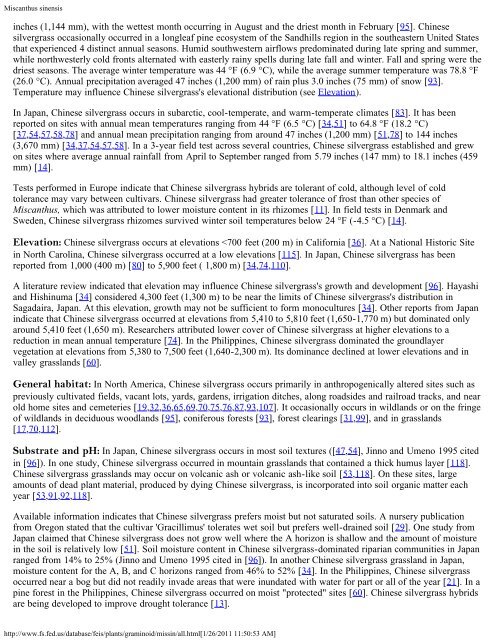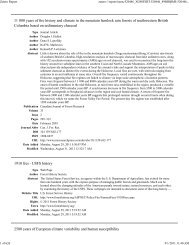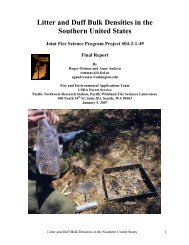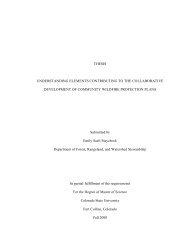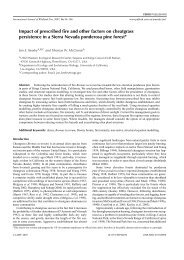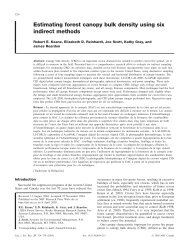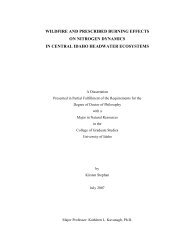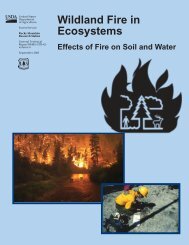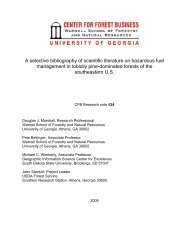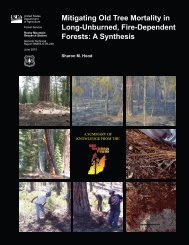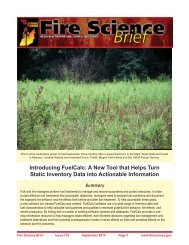Miscanthus sinensis - Joint Fire Science Program
Miscanthus sinensis - Joint Fire Science Program
Miscanthus sinensis - Joint Fire Science Program
Create successful ePaper yourself
Turn your PDF publications into a flip-book with our unique Google optimized e-Paper software.
<strong>Miscanthus</strong> <strong>sinensis</strong><br />
inches (1,144 mm), with the wettest month occurring in August and the driest month in February [95]. Chinese<br />
silvergrass occasionally occurred in a longleaf pine ecosystem of the Sandhills region in the southeastern United States<br />
that experienced 4 distinct annual seasons. Humid southwestern airflows predominated during late spring and summer,<br />
while northwesterly cold fronts alternated with easterly rainy spells during late fall and winter. Fall and spring were the<br />
driest seasons. The average winter temperature was 44 °F (6.9 °C), while the average summer temperature was 78.8 °F<br />
(26.0 °C). Annual precipitation averaged 47 inches (1,200 mm) of rain plus 3.0 inches (75 mm) of snow [93].<br />
Temperature may influence Chinese silvergrass's elevational distribution (see Elevation).<br />
In Japan, Chinese silvergrass occurs in subarctic, cool-temperate, and warm-temperate climates [83]. It has been<br />
reported on sites with annual mean temperatures ranging from 44 °F (6.5 °C) [34,51] to 64.8 °F (18.2 °C)<br />
[37,54,57,58,78] and annual mean precipitation ranging from around 47 inches (1,200 mm) [51,78] to 144 inches<br />
(3,670 mm) [34,37,54,57,58]. In a 3-year field test across several countries, Chinese silvergrass established and grew<br />
on sites where average annual rainfall from April to September ranged from 5.79 inches (147 mm) to 18.1 inches (459<br />
mm) [14].<br />
Tests performed in Europe indicate that Chinese silvergrass hybrids are tolerant of cold, although level of cold<br />
tolerance may vary between cultivars. Chinese silvergrass had greater tolerance of frost than other species of<br />
<strong>Miscanthus</strong>, which was attributed to lower moisture content in its rhizomes [11]. In field tests in Denmark and<br />
Sweden, Chinese silvergrass rhizomes survived winter soil temperatures below 24 °F (-4.5 °C) [14].<br />
Elevation: Chinese silvergrass occurs at elevations


